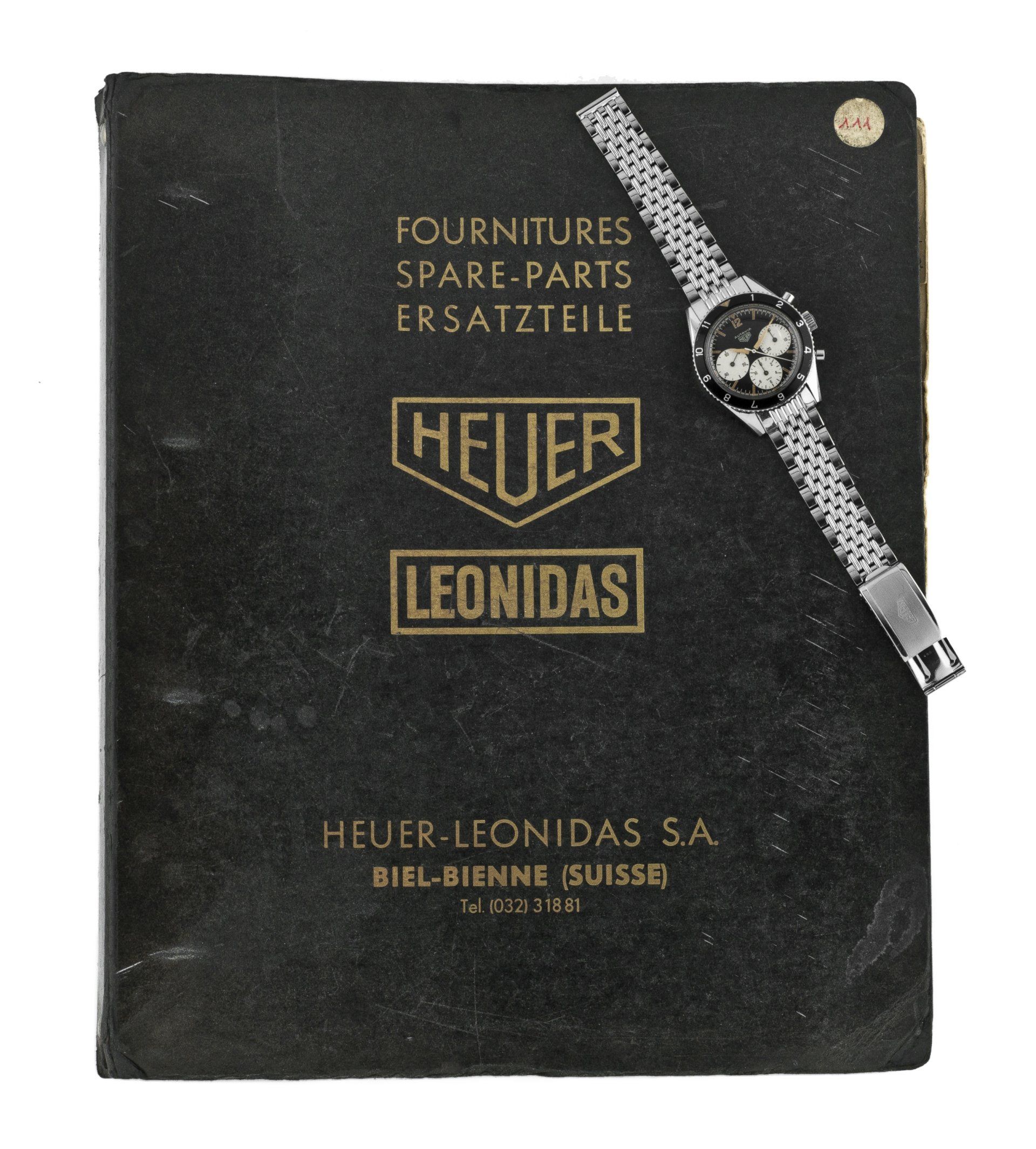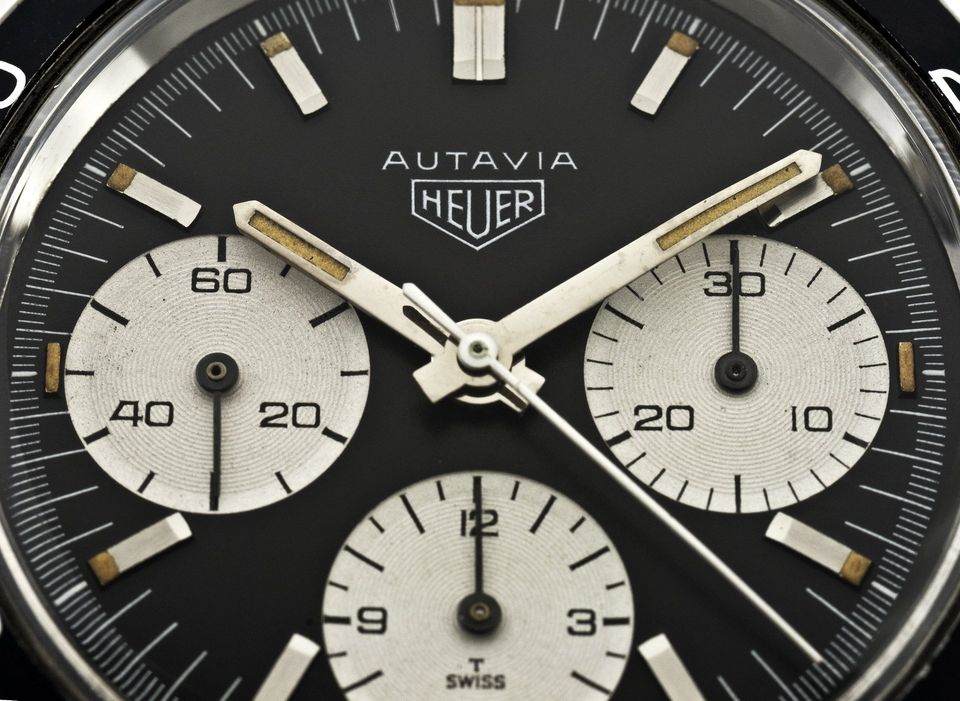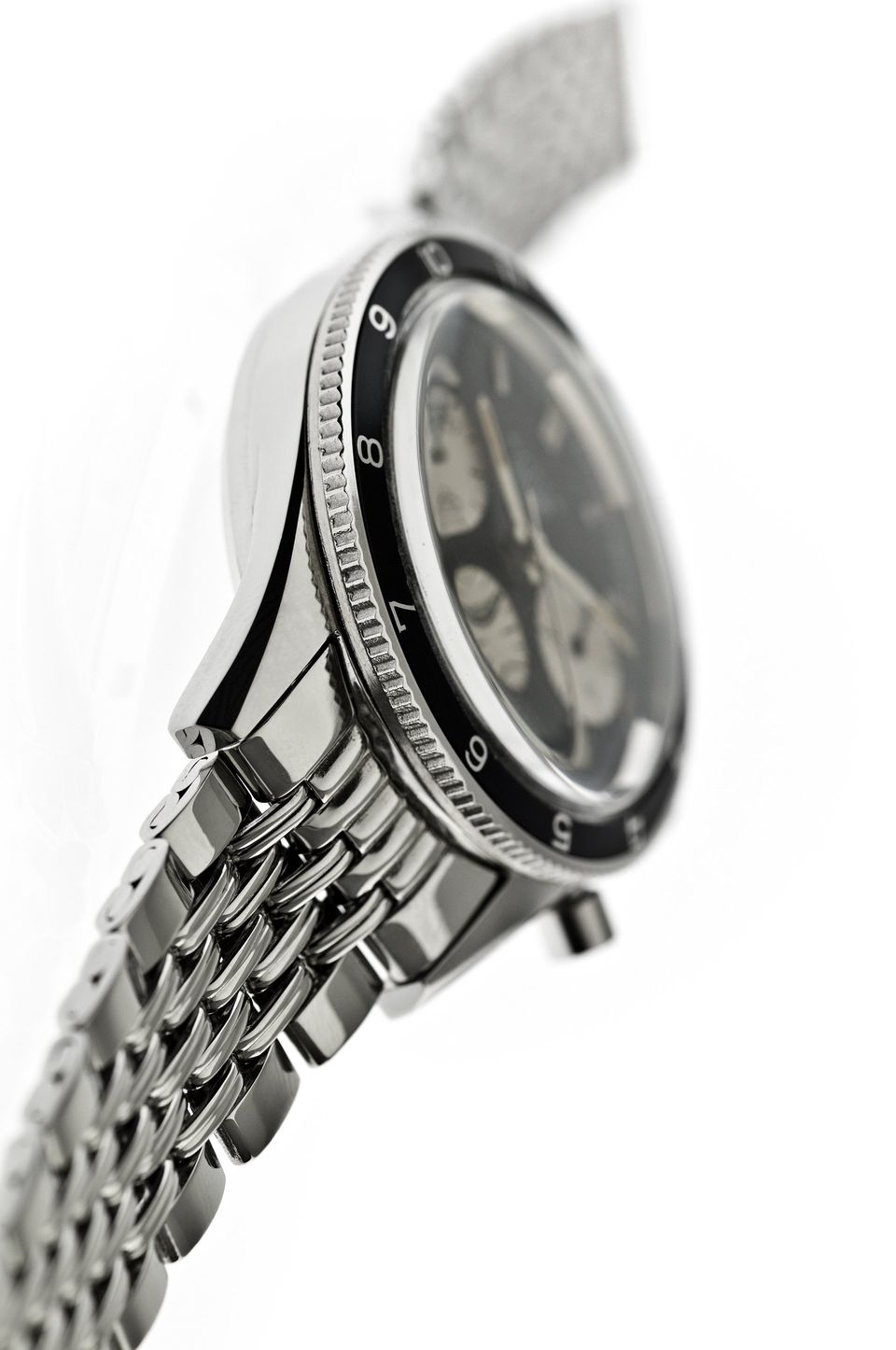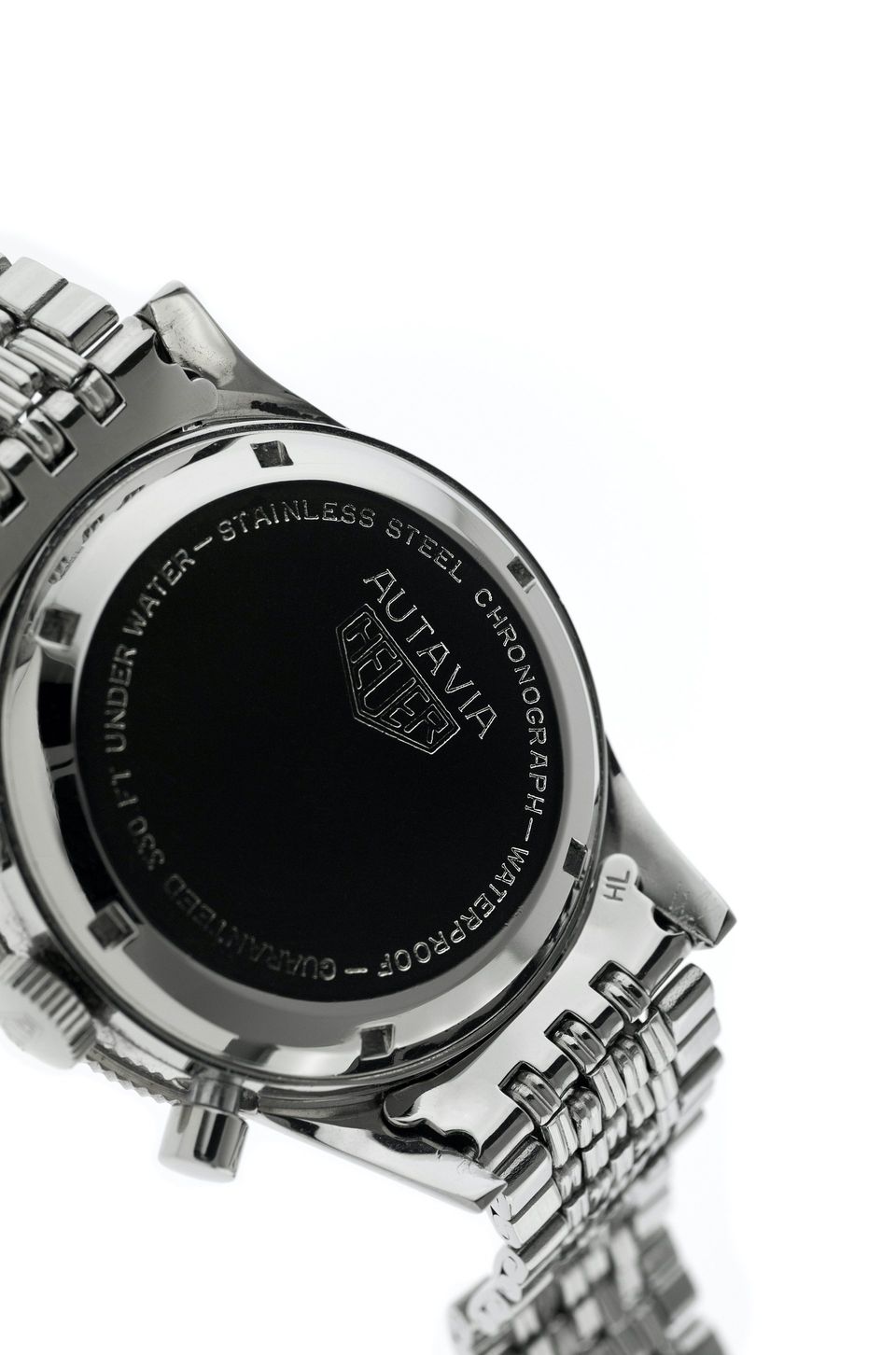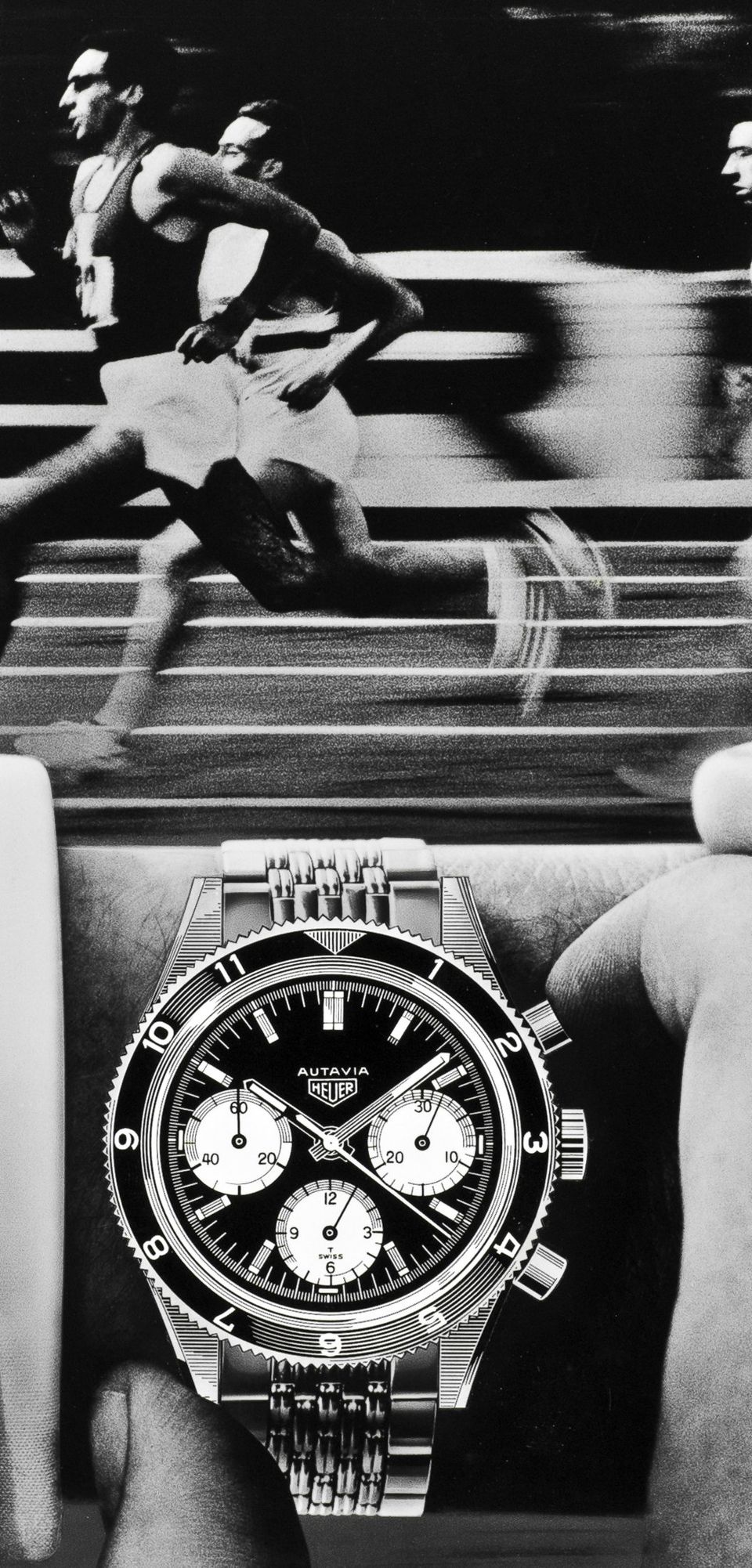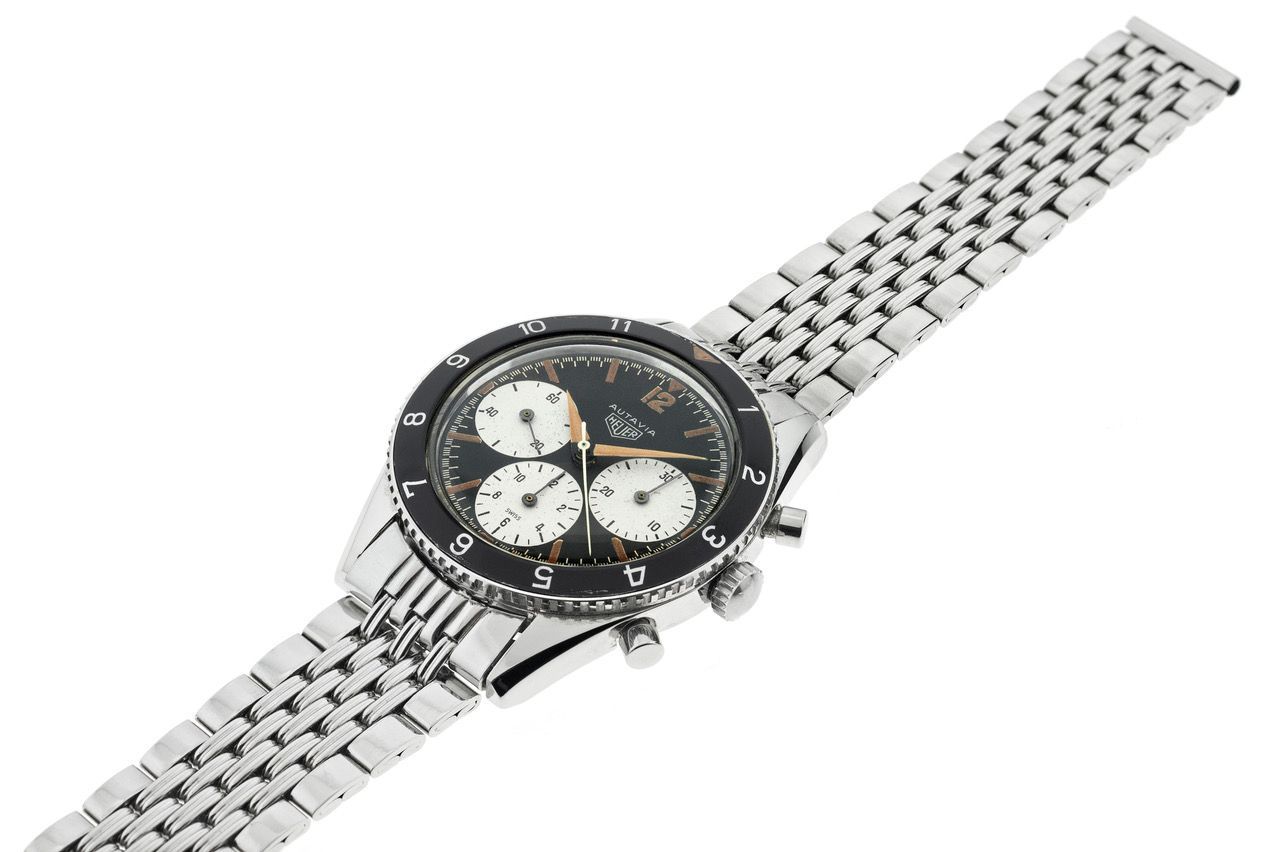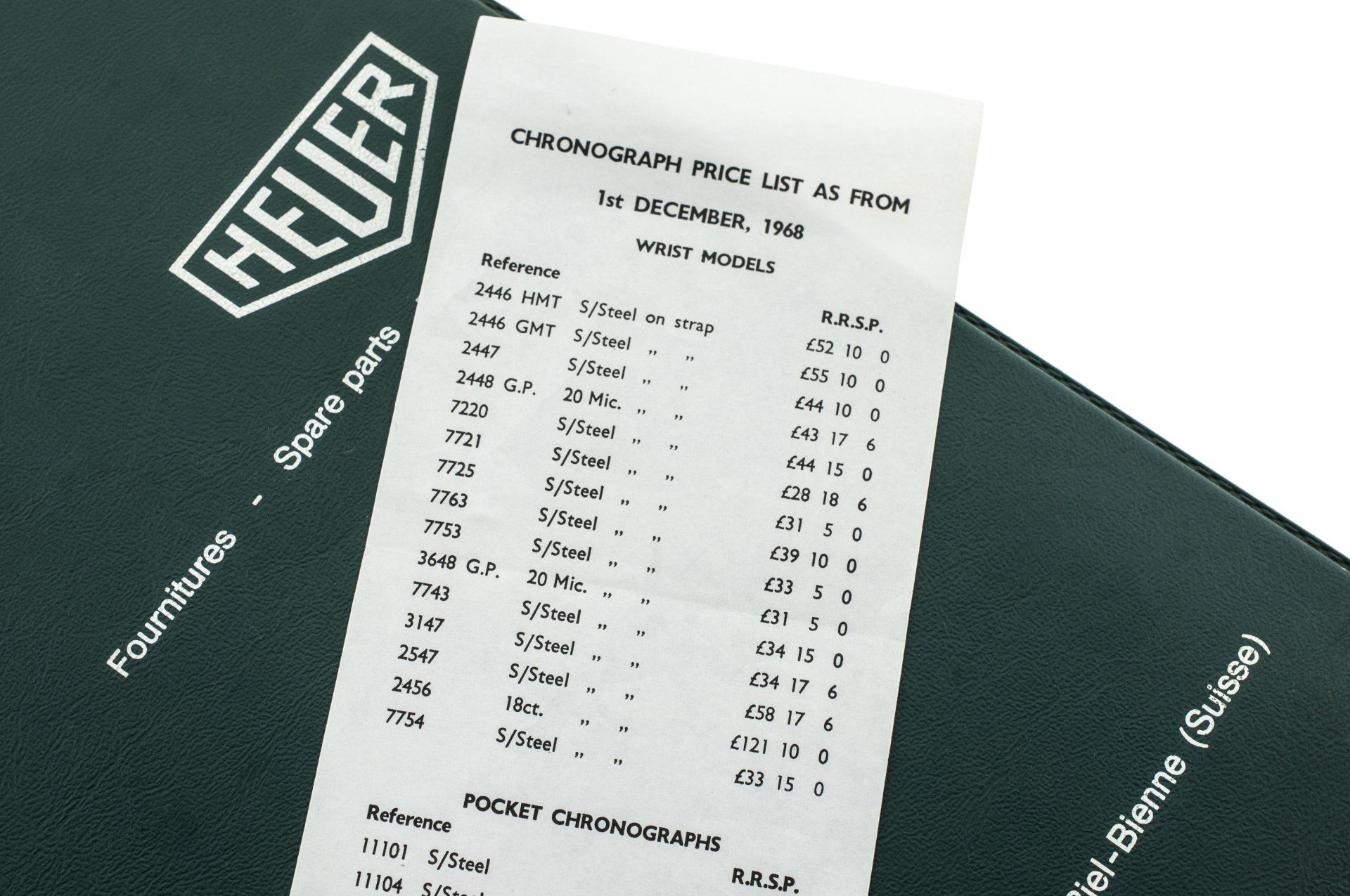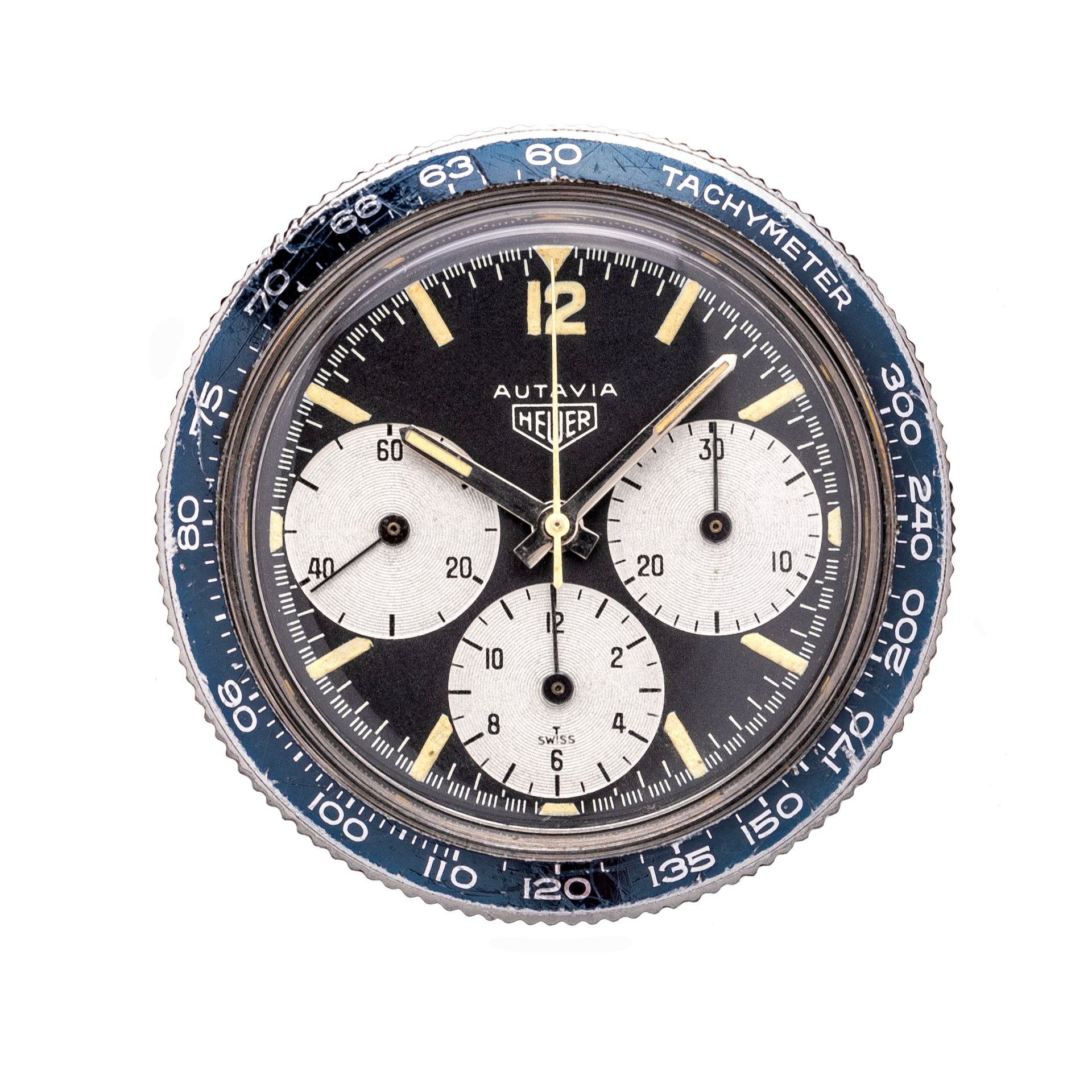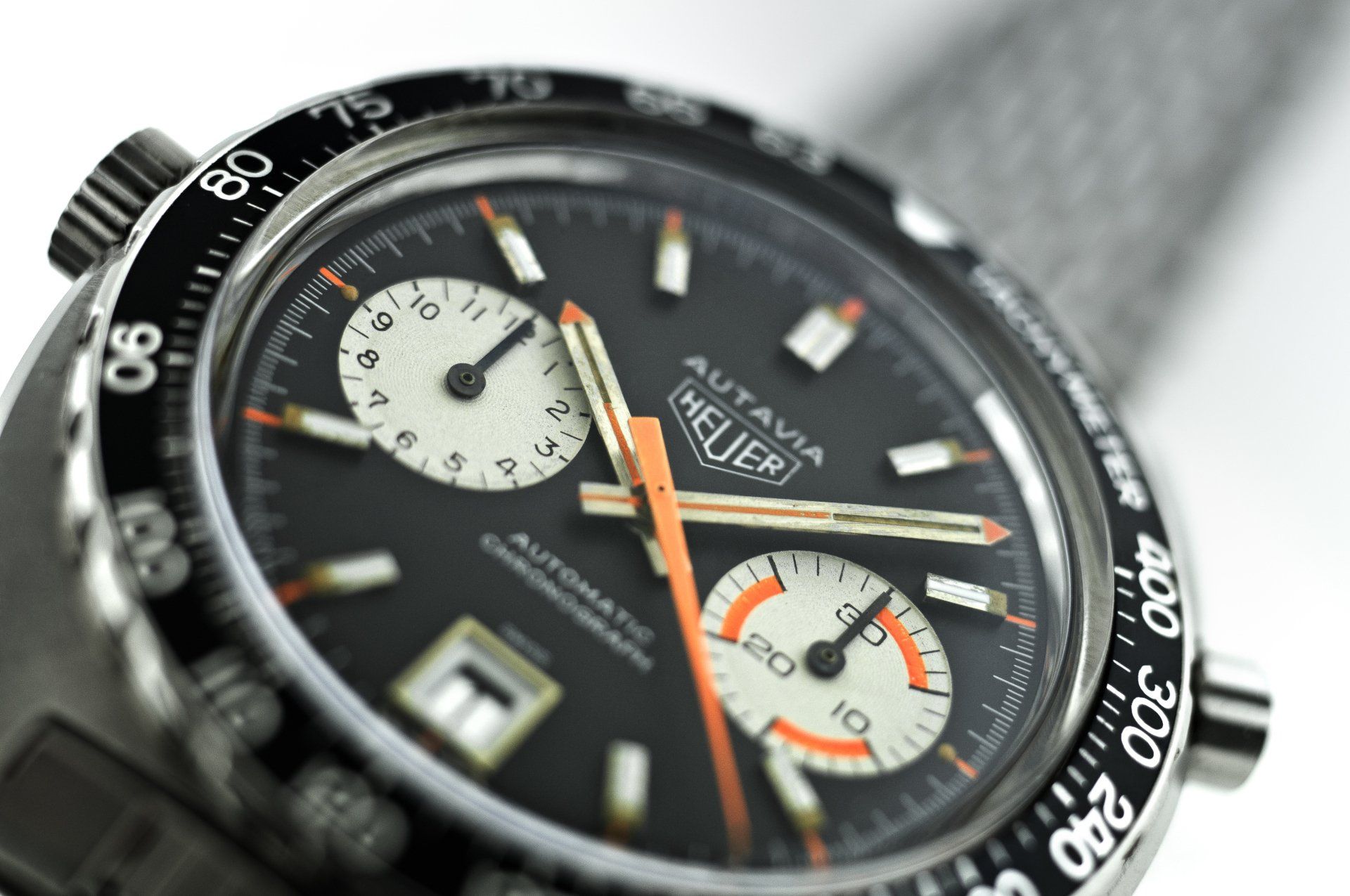The Heuer Autavia 2446 Rindt
I would imagine every serious watch collector has heard of the Rindt Autavia, and it is certainly one of Heuers most famous vintage chronographs.
The 1960s screw back case Autavia made its debut back in 1962 with the 1st execution Autavia, but by 1965/66 the features had morphed into the watch pictured here, technically known as the 3rd execution. This is the same dial that was used in the rarer transitional version, which bridged the gap between the 2nd execution and this, but the watch above is the first time we see the use of the thinner bezel, which then ran until the end of the series.
Buy The Heuer Autavia Book
These screw back case Autavias feature one of the best executed chronograph cases of the period. The size (39mm), weight, the bevelled lugs, and plexiglass are all "spot on", especially so when paired with the Heuer GF bracelet. When all the details are considered and compared I believe it is one of the most quintessential chronographs from the period from any watchmaker. This dial execution utilises longer steel markers compared to the 2nd execution and, for the first time, slimmer plain steel hands and a slimmer bezel were used, which allows the dial to take centre stage. Like the rest of the 2446 series, it remains powered by the legendary and trusty Valjoux 72, now signed Heuer Leonidas, as was the inside case back.
Those are the "anorak" details but the fact that this watch also comes with perhaps the best motorsport pedigree of any chronograph is just as important. There are many watches that purport to be "racing" watches, but that is often only by name or clever marketing: this watch (and the 3646 Andretti) is the real deal. Here is a watch that isn't just featured in a film but was worn on the wrists of Formula One greats, including the only F1 driver to posthumously win the world title, Jochen Rindt. He (and other drivers) were often photographed in their cars, strolling around the pit lane, covered in sweat and oil, with their Autavias strapped on. Rindt was known for his out and out speed and bravery but sadly, in September 1970, he passed away when qualifying for the Italian grand prix in his Lotus. A crash barrier and his seat belt were ultimately held responsible for his demise, which today (as we saw in Bahrain with Romain Grosjean in 2020) would be highly unlikely to occur. Sadly so many lives were taken too early back then.
Important details for collectors to note are that there have been TAG Heuer service bezels in circulation since 2017, which always makes the watch less valuable and collectible. They have less obvious serifs on the text and a slightly different finish when put next to the originals. There are also "service" (or just incorrect) white chronograph sweep hands in circulation; refer to the pictures below for how the original should look at the centre of the dial end. There are also two types of dial, the one featured on the watch pictured and a batch where the numerals are more rounded (which is actually much rarer although perhaps not as attractive). The rarer dial can be seen on the original advertising artwork below, which might suggest it appeared on the early dials post the transitional version as this is where they mostly seem to be observed. The Rindt is driven by the Valjoux 72 movement, which can come with some small variations, with Swiss on the bridge or not (but the movement will always be Swiss signed somewhere) and it normally appears with the chunkier bridge style (the thinner banana style might only appear very late in the serial run circa 95-96xxx). Lastly, most are to be observed with the hours or minutes style bezels, with the tachymeter rarer than both. However, the 24hr bezel (13-24) is much the rarest iteration, unless you have seen the decimal bezel of course ;)
The 2446 Rindt was allocated a (large for Heuer) serial run of up to 3000 serials during its 3-4 years of production. That is a maximum limit, and there was a batch within that allocation where Heuer used up 1st/2nd execution dials, so some adjustment downward is necessary to work out how many were produced. It remains Heuer's most successful reference of this period, along with the 3646 Andretti which had a similar serial allocation. But whilst it may not be the rarest Heuer chronograph, the real trick to buying a Rindt is finding one in exceptional condition, which is not an easy task as unlike watches like the Rolex Daytona they were used as a proper tool watch. It is only when the dial sub registers are mint, and the lug bevels are crisp and sharp (see the below pictures) that this watch truly sings! Values range between about £6000-7000 for an entry level example, to circa £17500+ that a truly mint one might cost in 2021.
If you would like to find out more information about the Heuer Autavia chronographs between 1962-85, or the Carrera and Monaco then click on the button below to read about the Heuer collector books.
Note: Please do not reproduce these images without permission.
